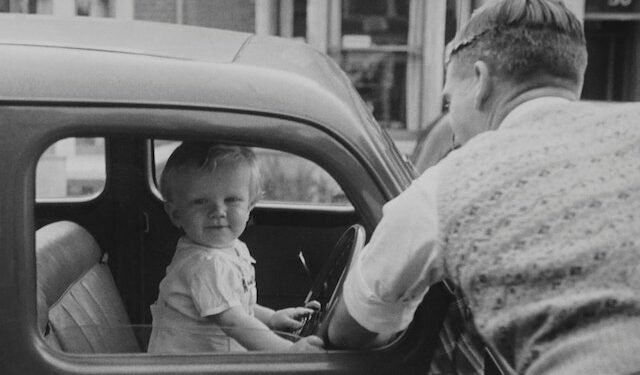How to Adjust Nuna’s Car Seat Straps?
First, to adjust the straps on a Nuna car seat, locate the strap adjuster at the back of the car seat. Pull it upward to loosen the straps and ensure they are loose enough for your child. Once your child is seated and buckled up, pull the strap adjuster downward to tighten the straps snugly around their shoulders.
Make sure the straps are secure and snug but not too tight so that they restrict your child’s movement or cause discomfort. Regularly check and adjust the straps to ensure your child’s safety and comfort in the car seat.
How do I make my Nuna car seat straps looser?
Before you begin making adjustments, you must loosen the harness so that you can move.
- Find the buckle in between the legs of your child’s car seat.
- Press the buckle’s button and then pull the two straps forward, releasing them from the buckle. This will allow you more flexibility when you adjust the straps of your harness.
Loosening the Harness Straps
The mechanism for adjustment for Nuna car seats is usually located at the bottom of the car seat or in the back of the seat.
- Find the adjuster lever or button. In some models, this is located at the bottom of the car seat, just below the area where the child’s feet rest. In certain models, it could be a lever or strap at the rear of the seat.
- Once you’ve located the adjuster and found the lever, press it or pull it up (depending on the model). At the same time, hold the adjuster’s button or lever and pull the shoulder straps toward the direction you want them to move.
Checking the Harness Fit
After you’ve adjusted the harness, it is important to ensure the fit is appropriate to ensure your child’s safety.
- Put your child’s car seat in place and secure the harness like you would normally.
- Make sure the harness is in good shape. Harness to ensure it is snug. The harness should squeeze at least two fingers between your child’s collarbone and the harness’s strap. The harness must be comfortable but not too snug. If it’s too loose or tight, you’ll have to adjust it again.
Re-securing the Harness Buckle
Once you’ve adjusted and verified the fit, attaching the harness is time. Re-fasten the harness buckle by putting both straps in the buckle until you can hear the click. Make sure that the buckle is securely secured. Check again to ensure that the straps are tight but also comfortable for your child.
What level should baby car seat straps be?
The position of the harness straps in your baby’s car seat should change as your baby grows to ensure maximum safety. Here is a simple guideline:
| Baby’s Age | Strap Position |
| Newborn to around 1 year | Straps should be at or below the baby’s shoulders |
| 1 year and older | Straps should be at or above the toddler’s shoulders |
Positioning Straps for Infants and Newborns
For infants and newborns (roughly until the age of one year), the car seat straps must be inserted into the slots located just below or at the baby’s shoulders. This will help keep the baby in the seat and prevent the infant from falling underneath the straps in the event of a sudden stoppage or a crash.
Before securing your baby in the car seat, ensure the straps aren’t bent and laid on the floor against your child’s body. Also, ensure the chest clip is adjusted to the armpit level. The harness should be secure, with not more than two fingers width between the straps and your baby’s chest.
Positioning Straps for Toddlers and Older Children
When your child enters toddlerhood (around 1 year and above), particularly when you are using forward-facing car seats, the straps must be at or above your child’s shoulders. The higher position of forward-facing car seat straps can help safeguard your child’s head and neck from injury in the event of a collision.
Similar to infants, ensure that the straps are flat, not bent, and secure around your child’s back. The chest clip must align with your child’s armpits, not close to their stomachs or up close to their neck. Be aware that a secure strap means you don’t have to pinch any excess webbing on the shoulder.
Precautions When Positioning Straps
When you are putting in and securing the straps to your baby’s car seat, there are a few things to be aware of. Always check the car seat’s user manual to get specific guidelines, as various car seats may have distinct features and mechanisms.
Also, test the straps’ tightness each time you place your child in the car seat. A good guideline is to use the “pinch test.” If you can pinch the straps on your child’s shoulders, the straps are loose.
Maintaining Car Seat Safety
Check the straps of your car seat for indications of wear and tear. The worn or damaged straps may not be able to protect your baby in the event of a crash. If you spot any damage, you should contact your car seat manufacturer for replacement parts or assistance. Never use car seats with straps that are damaged.
Don’t add any accessories from the market, such as strap padding or covers that don’t have to be included with the car seat. They may hinder the functionality of the car seats and possibly harm your child in a crash. Always adhere to what your car seat manufacturer includes with the car seat or accepts.
Positioning Straps for Infants and Newborns
For infants and newborns (roughly until the age of one year), the car seat straps must be inserted into the slots located just below or at the baby’s shoulders. This will help keep the baby in the seat and prevent the infant from falling underneath the straps in the event of a sudden stoppage or a crash.
Before securing your baby in the car seat, ensure the straps aren’t bent and laid on the floor against your child’s body. Also, ensure the chest clip is adjusted to the armpit level. The harness should be secure, with not more than two fingers width between the straps and your baby’s chest.
Positioning Straps for Toddlers and Older Children
When your child enters toddlerhood (around 1 year and above), particularly when you are using forward-facing car seats, the straps must be at or above your child’s shoulders. The higher position of forward-facing car seat straps can help safeguard your child’s head and neck from injury in the event of a collision.
Similar to infants, ensure that the straps are flat, not bent, and secure around your child’s back. The chest clip must align with your child’s armpits, not close to their stomachs or up close to their neck. A secure strap means you don’t have to pinch excess webbing on the shoulder.
Precautions When Positioning Straps
When you are putting in and securing the straps to your baby’s car seat, there are a few things to be aware of. Always check the car seat’s user manual to get specific guidelines, as various car seats may have distinct features and mechanisms. Refrain from relying on general rules or suggestions.
Maintaining Car Seat Safety
Check the straps of your car seat for indications of wear and tear. The worn or damaged straps may not be able to protect your baby in the event of a crash. If you spot any damage, you should contact your car seat manufacturer for replacement parts or assistance. Never use a car seat with straps that are damaged.
Don’t add any accessories from the market, such as strap padding or covers that don’t have to be included with the car seat. They may hinder the functionality of the car seats and possibly harm your child in a crash. Always adhere to what your car seat manufacturer includes with the car seat or accepts.
Can I use the Nuna PIPA car seat without the base?
The Nuna PIPA is a light and elegant car seat renowned for its True Lock safety system. This is the additional base for it. The car seat also has a base; however, an additional base is extremely useful for two-car families or if your child often travels with caretakers or grandparents.
The PIPA light, PIPA lite lx, and PIPA lite and r are specifically designed to be installed on the base and cannot be used without the base. They have been tested and are approved for use in aircraft that are equipped with the base.
It is important to remember that the car seat without a base might require more effort to install and may not offer the same degree of comfort when paired without the base. The base is designed to ease installation and ensure an ideal fit.
If you are using the car seat with the base, you must follow the manufacturer’s directions to ensure that you thread the belt through the belt route within the car seat. It is essential to ensure the seat is properly installed and tightened to ensure the best protection for your infant during a crash.
If you don’t use the base or install your car seat independently, it could not be as secure or stable and could compromise your child’s safety. You should carefully read the instruction manual for your car seat and follow the manufacturer’s instructions for the base and non-base installation to ensure the most secure use of the Nuna Pipa car seat.
Nuna Car Seat Straps are too Short
If you find that the Nuna car seat straps aren’t enough for your child, there are some steps you could take:
- Verify the height of the harness: Check that your harness straps are appropriate for your child’s shoulders. The car seat typically comes with multiple slots to modify the length of the straps. If the straps aren’t long enough, you may have to move them into a higher slot to allow for more length.
- Utilize strap extenders: Certain car seat manufacturers have strap extenders or other accessories that add length to the straps on the harness. Contact Nuna or a certified retailer to determine if strap extenders are offered for your particular car seat model.
- Contact customer service: If the options above do not resolve the issue, speak to Nuna’s customer service directly. They can advise on possible solutions or alternative options to guarantee your child’s safety and comfort in their car seat.
It is crucial to put your child’s safety first. Therefore, it’s essential to adhere to the manufacturer’s guidelines and guidelines when making modifications or adjustments to the car seat.
FAQs
How do you know when to adjust car seat straps?
How do you adjust a Nuna PIPA handle?
Where should car seat shoulder straps be?















